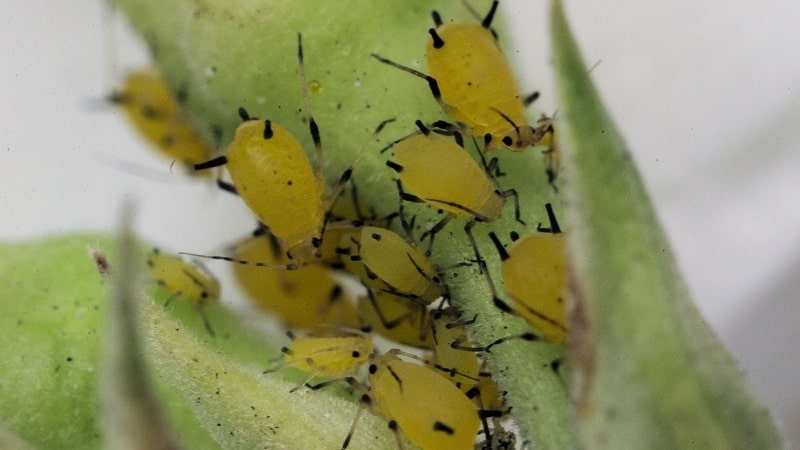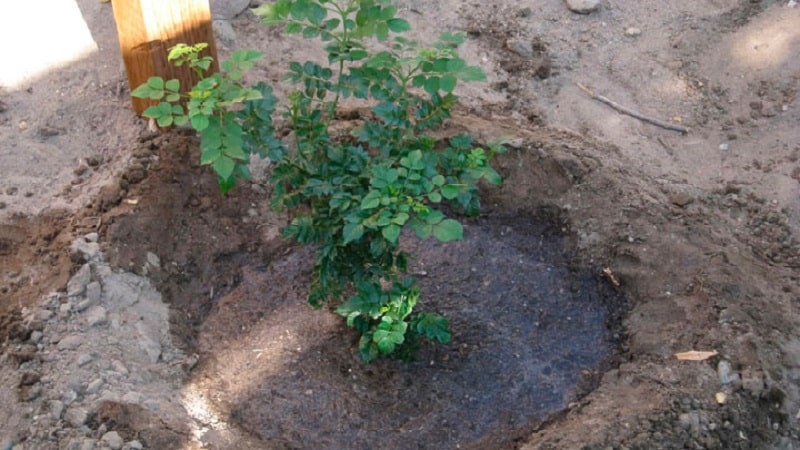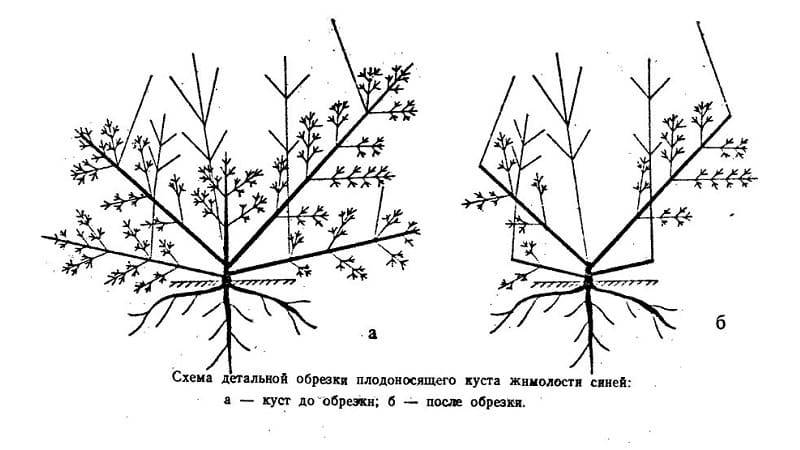Sweet and sour mid-early variety of honeysuckle “Gerda”
Gerda is one of the domestic varieties of early ripening honeysuckle. It is characterized by early fruiting and a pleasant, sweet and sour taste of berries. The article will introduce you to a description of the variety, advantages and disadvantages, as well as features of pollination, planting, growing and harvesting.
Description of the honeysuckle variety

Gerda – edible honeysuckle, bred by domestic breeders. The berries of this variety contain many useful substances; they are recommended for use for anemia, colds and sore throat. Honeysuckle helps strengthen the immune system and the full development of the circulatory system, has anti-inflammatory and antibacterial properties, and prevents the formation of tumors.
Origin and development, history of breeding
Variety Gerda is a variety of Kamchatka honeysuckle. Bred in 1987 by breeders of the Siberian Research Institute of Horticulture named after. M. A. Lisavenko as a result of pollination of the Blue Bird variety with a mixture of pollen collected from different regions of Russia.
Gerda has been at the state variety testing since 1988, and was included in the Russian state register in 1994.
Characteristics, description of appearance, taste
The bushes are compact, low-growing (height no more than 1.5 m), with a spreading spherical crown and straight, matte green shoots. The leaves are elongated-oval with a pointed tip, large, green.
The berries are oval in shape with a slightly elongated top, weigh on average 0.67-0.91 g, covered with smooth thin skin of blue-black color with a bluish-gray waxy coating.
The pulp is tender, has a sweet and sour taste and a faint aroma.
Features of the use of this variety
Gerda berries are consumed fresh, frozen, dried, and used for making jams, compotes, preserves and juices.
Leaves and branches are used in folk medicine, preparing healing infusions and decoctions from them.
Due to their decorative appearance, bushes are used in landscape design to decorate a garden or local area.
Ripening period, yield and fruiting
Gerda is an early ripening variety. The bushes bear fruit from the second year after planting, but large volumes of berries are harvested only after 3-4 years.
The average yield is 38.6 c/ha or 1.7 kg/bush, the maximum is 76.7 c/ha.
Resistance to diseases and pests

The Gerda variety can be affected by phytoviruses and fungal diseases. Dangerous pests include aphids, honeysuckle mites and scale insects.
Resistance to cold and drought
This is a winter-hardy variety - the bushes tolerate drops in air temperature to -40...-50°C, but the buds die already at -8°C.
Gerda tolerates hot weather well, but if drought occurs during the ripening period of the berries, additional watering is required for their growth.
For which regions is it best suited and what are the climate requirements?
The variety is included in the state register for the West Siberian region. Due to its unpretentiousness to climatic conditions, it is allowed to cultivation in all climatic zones of the Russian Federation, except for the Far North.
The main advantages and disadvantages of the variety
The main advantages of the variety:
- drought and frost resistance;
- early ripening of berries;
- precociousness;
- unpretentiousness;
- decorative appearance of bushes;
- universal use of fruits;
- pleasant taste;
- partial self-pollination;
- no tendency to shed berries.
The disadvantages of Gerda are the extended period of fruiting.
What is the difference from other varieties and hybrids
Comparison of Gerda with other early ripening honeysuckle varieties in the table:
| Variety | Average weight of berries, g | Berries shape | Taste | Productivity, c/ha |
| Gerda | 0,67-0,91 | Oval with a slightly elongated tip | Sweet and sour | 38,6 |
| Fortune | 0,8 | Elliptical with pointed edges | Sweet and sour | 63,7 |
| Three friends | 1,4-1,6 | Elongated oval | Sweet and sour | 83 |
| Titmouse | 0,8 | Oblong-oval and ellipsoid | Sweet and sour | 55 |
| Siberian | 1 | Fusiform | Sweet | 107 |
| Narymskaya | 0,9 | Elongated oval | Sweet and sour | 73,3 |
| Minusinsk blue | 0,84 | Ellipsoidal | Sweet and sour with a slight bitterness | 50,6 |
Agricultural technology
To obtain an abundant and high-quality harvest of honeysuckle, a number of conditions must be met, including the correct selection and preparation of the site and planting material, as well as providing the plants with proper care.
Choosing a place in the garden and preparing holes
For landings Gerdas choose a well-lit place located along a fence or other hedge that will protect the bushes from gusty winds. Plants are not planted in lowlands due to the risk of flooding - stagnation of water in the soil leads to rotting of the root system and death of the bushes.
Preparing for landing
For planting, choose one- or two-year-old seedlings 0.5-1 m high without signs of disease or pest damage, with smooth shoots and uniform green leaves, giving preference to specimens with a closed root system - their roots are not overdried, which improves the survival rate of the bushes.
The soil on the site is dug up in advance, cleared of plant remains and weeds, fed with manure or humus, superphosphate and potassium salt (10 kg, 30-60 g and 20-30 g, respectively, per 1 sq. m.).

Soil requirements
The variety prefers loose, fertile, moisture-permeable soil with good aeration and weak or neutral acidity. The most suitable option is loam or sandstone.
Dates, scheme and rules of planting
Gerda honeysuckle is planted in the ground from August to mid-October.
Planting pattern:
- Dig planting holes in the prepared area with a depth of 30-40 cm and a diameter of 25 cm. The distance between the bushes should be 1.5-2 m.
- Fill them two-thirds with fertile soil and form a small hill in the center.
- Place a seedling on it and straighten its roots.
- Cover the plant with soil so that the root collar is buried 3 cm or at soil level.
- Water the plantings generously, pouring 10 liters of water under each bush.
- Mulch the ground with humus or peat.
Features of cultivation and nuances of care
In the spring-summer period, watering is carried out every two days, pouring a bucket of water under each bush. In autumn, plants are not watered.
A day after watering or rain, the soil is loosened to improve the access of moisture and oxygen to the roots of honeysuckle. At the same time, the ground is weeded, clearing it of weeds, which take nutrients from the soil and create high humidity.
Honeysuckle is fed in the spring with mineral fertilizers, in particular ammonium nitrate at the rate of 30 g per bush. In autumn, the variety responds well to potassium-phosphorus fertilizers (superphosphate, kainite).
To increase productivity and prevent diseases and pests, the bushes are regularly thinned out, leaving strong and straight young shoots and removing weak, twisted, damaged and old (over 15-20 years old). Honeysuckle is pruned in early spring (March-April) or late autumn (early October-November), before frost.
Reference. The branches are cut off, leaving stumps 30-50 cm long.

Pollinators
This is a partially self-fertile variety. To increase productivity and improve the quality of fruits, suitable pollinators are planted nearby, which can be any varieties of Kamchatka honeysuckle, but the best ones have proven themselves: Assol, Chelyabinka, Kuvshinovidnaya, Fianit, Slastena, Berel.
Reference. Growing inedible honeysuckle bushes nearby provokes the formation of unedible fruits on Gerda.
Disease and pest control
Honeysuckle Gerd can affect:
| Disease, pest | Description | Treatment, prevention |
| Phytoviruses | Light green spots form on the leaves, and mottling is noticeable along the central veins. | Damaged shoots are cut off and burned. |
| Fungal diseases | The leaves become stained, deformed and dry out. | In early spring, the bushes are sprayed with “Fundazol” and a solution of copper sulfate. |
| Aphid | The leaf plates dry out, become deformed, spots form on them, and the shoots stop growing. | Plants are treated with garlic, tobacco and pepper tinctures. |
| Honeysuckle mite | The leaves become covered with dark spots, and by the end of summer they become brown and dry out. | To prevent pest attacks, bushes are regularly thinned out and treated with Omite or Tedion. |
| Shchitovka | Pest feeds on the sap of branches and shoots, which, as the infection progresses, stop developing and die. | To prevent the appearance of scale insects, the bushes are sprayed with Rogor or Actellik twice at the end of June, with an interval of 10 days. |
Preparing for winter
At the end of autumn, the bushes are prepared for winter. To do this, the ground in the tree trunk circle is mulched with horse humus. In the northern regions, plants are covered with spunbond or other covering material.
Reproduction
The method of seed propagation, due to its complexity, is used only by breeders. Gardeners propagate Gerda vegetatively: by cuttings or by dividing the bush.
For cuttings in the fall, cuttings 7-12 cm long are cut from the middle of weakly bending or damaged shoots at an angle of 45° and placed in a dry cellar or basement for storage. In May-June, the cuttings are planted in prepared soil, deepening the highest bud by 0.5 cm.
The division method is acceptable for bushes no older than five years. To do this, the plant is dug up and divided into several parts with pruning shears so that each has 3-4 young shoots and rhizomes.
Harvesting
The berries ripen around June 15-22. The harvest is harvested by hand, after placing fabric under the bushes on which they will fall.
Reference. The fruits are stored in the refrigerator for no more than 2-3 days.
What difficulties may there be when growing
Problems that may arise when growing Gerda:
- the bushes develop poorly, wither, die - probably the plants are planted in lowlands where water accumulates, or this is the result of excessive watering, which causes the roots to rot;
- the leaves dry out and become deformed - the plantings have been attacked by aphids or this is a symptom of a fungal disease; the bushes need to be treated with insecticides (Akarin, Apollo) or fungicides (Fundazol).
Tips and reviews from experienced gardeners about the variety
Gardeners recommend:
- despite the variety’s resistance to unfavorable climatic conditions, do not neglect mulching the soil in the tree trunk circle; it is advisable to use a mixture of horse humus and fertile soil for this;
- change the location where honeysuckle is planted every 20 years.
Farmers speak positively about the Gerda variety:
Elena, Bryansk: “I have been growing Gerda for about 10 years. At first, the variety was not happy with its yield; after five years it got better, but I still wanted more berries. Then I started looking for information about this honeysuckle and realized that it needs pollinators. I planted a couple more bushes of other varieties and now I can’t be happier – the yield is excellent, the berries are very tasty.”
Victoria, Samara: “I chose an early-ripening variety so that the berries could be eaten while other crops were not yet bearing fruit. The neighbors at the dacha told Gerda, I listened and planted several bushes. I have never regretted it - I like both the yield and the taste of the berries. And the bushes are beautiful, I planted them along the fence, they look great.”
Conclusion
Gerda is an early ripening variety of edible honeysuckle. The bushes are decorative and frost-resistant; they begin to bear fruit just two years after planting and form delicious sweet and sour berries, suitable for universal use.